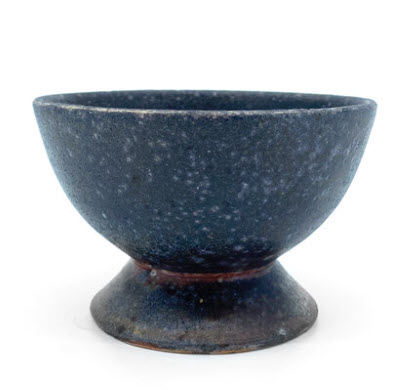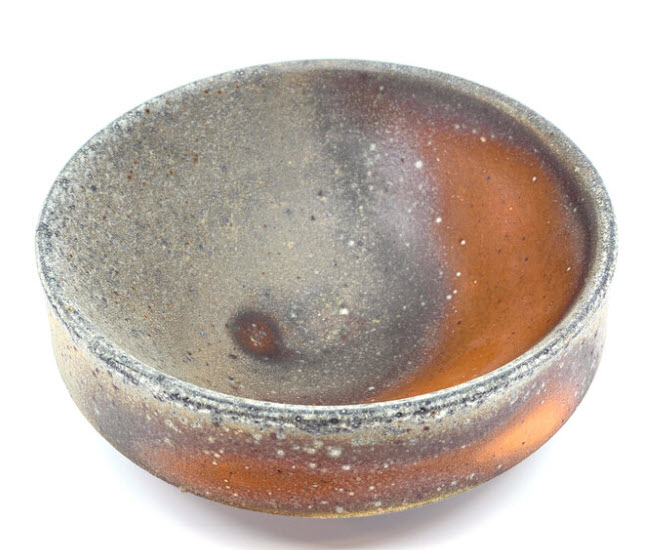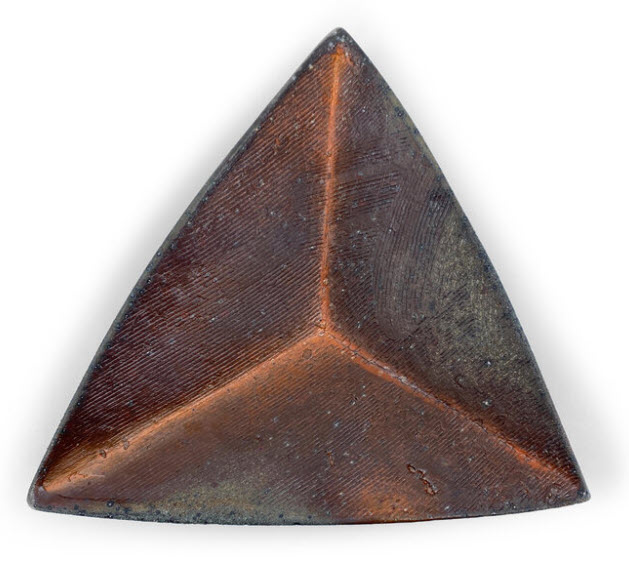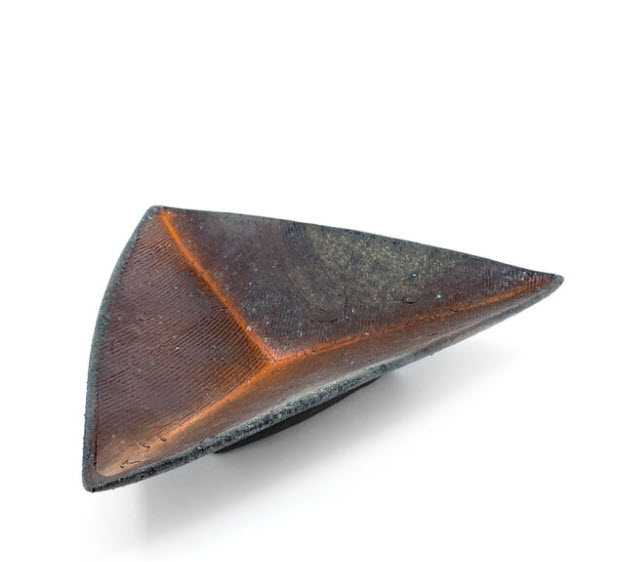I’m attracted to the stark, almost Spartan, forms of Stuart Gair’s pottery. He simplifies forms, driving that simplification further and further towards abstraction. He leaves surface decoration to the vagaries of soda firing (although he tells me he carefully places each pot in the kiln to achieve certain surface effects). The results are meditative, almost Zen-like objects of tremendous visual interest.
JW: You have simplified forms – but quite a few different forms (e.g., vase, teapot, globes, spaghetti jar, etc). Where do you come up with ideas for these different forms – especially the more unique ones like spaghetti jars, envelope vases, folded vases?
SG: Ideas for forms come from many different places. Always thinking about sculptural qualities such as balance, edge, light, shadow, minimalism, and how the object occupies space. All the while, trying to balance everything with function and how its used.

It’s important for me that the piece functions but I often try to challenge conventional forms and ask the user to think differently.
Particular examples are the vases I’ve been working on such as the envelope vases and the box vases with the small opening. The idea is to pack the vase with flowers so they stand upright and don’t droop over the vessel. This way, both are elevated. The opening is a particular size to constrict/highlight the green stems and kind of frame them with the grey pot. So that’s something I’m always thinking about.

I tend to look at older Japanese and Korean pots, Mid Century (American and British and Scandinavian) ceramics, glass, and metal objects for inspiration. Also, any sculpture and geologic inspiration from the world around me here in Colorado.



JW: You say your forms are influenced by a study of Scandanavian and Shaker design. Have you always worked with these sources of influence or did that evolve over time?
SG: I started off looking at a lot of American pots from the early 19th century and that informed a lot of my forms. I worked at a historical reenactment village in Ohio called Hale Farm. I dug my own clay there, fired my first gas kilns and learned a lot about making through repetition of producing historically accurate wares.
JW: You list a long list of exhibitions on your website – and appear to do many shows each year (I count 19 in 2015 alone). How do you approach exhibitions and shows? Are they primarily vehicles to sell your work or market yourself?
SG: Earlier on, I applied to shows to get my work out there. I wanted people to see what I was making on more than a local scale. Now I pretty much only do exhibitions that Im invited to . Other than the solo shows, theyve never been about selling work…more about getting it out there in the world. Most income comes from online sales, commissions, and workshops.
JW: You’ve also participated in a number of residencies. How are the different residency programs different (or are they different)?
SG: They’re all different and I have highly valued my time at those residencies. Early on, I was the Salad Days artist at Watershed where it was my task to complete 500 plates for an annual fundraiser (salad days) the following summer. This experience taught me the value of routine and repetition while working with clay. Without that experience, I would not have nearly as much discipline in the studio. Was also my first residency and I met so many people while there that I’m still friends with and we’ve been able to help each other out in many ways, both personally and professionally.


I went to Harvard which was more of a teaching residency and very demanding of my time in that regard. I loved it. I was able to teach a lot of different classes and there were a lot of professors from other fields that were taking my classes which was really interesting because of what they brought to the table. Whether History, anthropology, geologists, et cetera. Each one had a different take on clay in general and their approach and insights were always fascinating.

Archie Bray was also a very different experience in that it was a totally immersive experience and it was the first time I could focus solely on my own studio practice and the evolution of my work. Also became much more business oriented during my time there. Learned a lot from my cohorts and visiting artists who came through once a month. Taught me how to be self sufficient and has been a driving force for my decision to leave academia and pursue a career as a studio potter next year.
JW: Can you tell me about your process?
SG: Most forms are thrown and altered either by paddling, pushing, or cutting. However, I often use molds for forms like my plates, pitchers, and folded dishes. I’ve also begun slip casting recently. The soda firing process is a huge part of my work, While many artists spend ample time carving, drawing, or glazing their work, my surface decoration comes from meticulous placement of each pot in the kiln. It is important that each firing is only my work because particular pieces are created to be paired with other pieces in the kiln and in particular locations. I typically draw rough sketches of how the pieces will be placed in the kiln prior to loading.

More examples of Stuart’s pottery can be found on his website.









Beautiful forms and finishes. This is really elegant work.
LikeLike